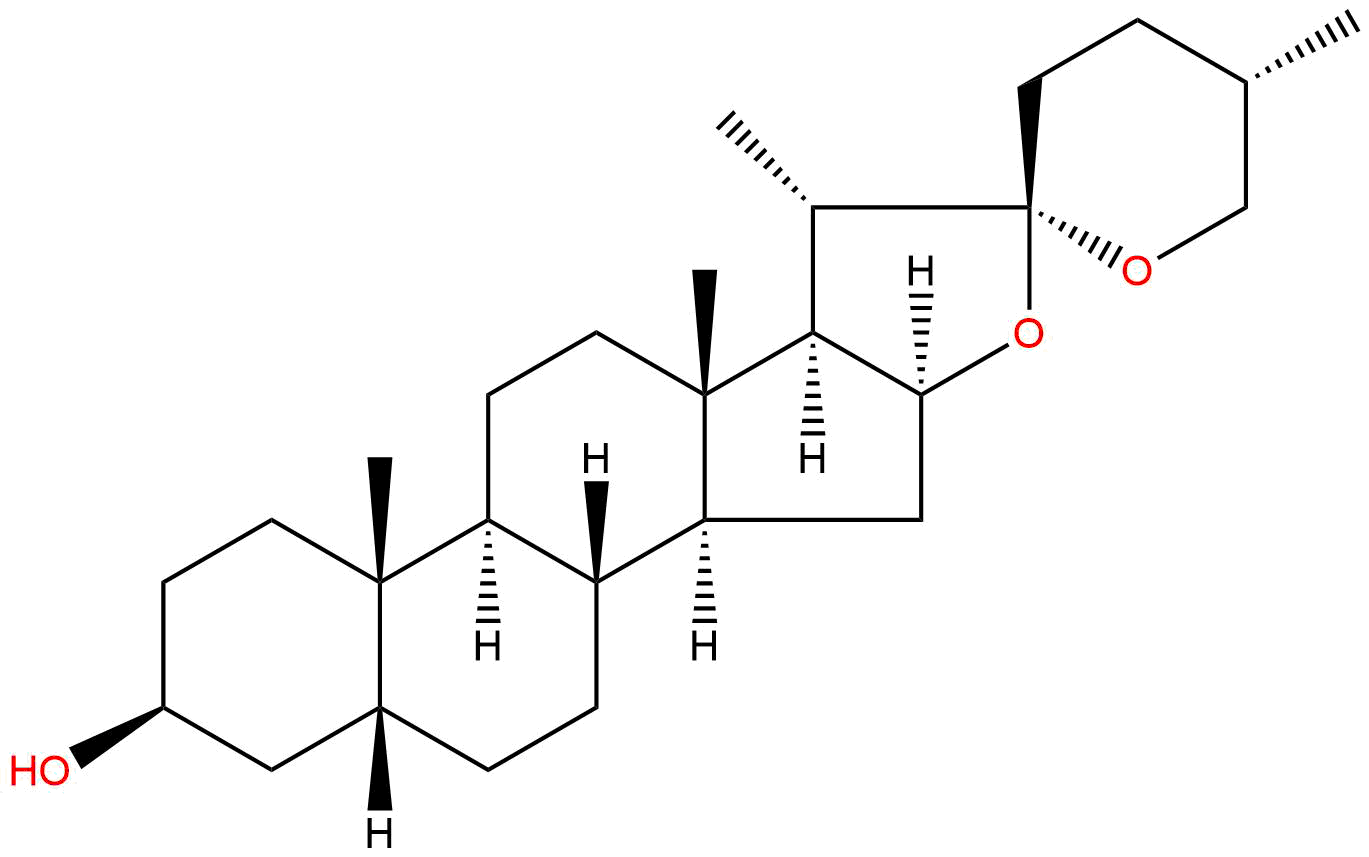
SarsasapogeninCAS No.:126-19-2
|
||||||||||
 |
|
|
||||||||

| Catalogue No.: | BP1257 |
| Formula: | C27H44O3 |
| Mol Weight: | 416.646 |
Synonym name: Parigenin
Catalogue No.: BP1257
Cas No.: 126-19-2
Formula: C27H44O3
Mol Weight: 416.646
Botanical Source: Radix sarsaparilla (sarsaparilla root)
Purity: 95%~99%
Analysis Method: HPLC-DAD or/and HPLC-ELSD
Identification Method: Mass, NMR
Packing: Brown vial or HDPE plastic bottle
Can be supplied from milligrams to grams, up to kilograms.
Inquire for bulk scale.
Description:
Sarsasapogenin is a steroidal sapogenin, that is the aglycosidic portion of a plant saponin. It is named after sarsaparilla (Smilax sp.), a family of climbing plants found in subtropical regions. It was one of the first sapogenins to be identified, and the first spirostan steroid to be identified as such. The identification of the spirostan structure, with its ketone spiro acetal functionality, was fundamental in the development of the Marker degradation, which allowed the industrial production of progesterone and other sex hormones from plant steroids.
Sarsasapogenin is unusual in that it has a cis-linkage between rings A and B of the steroid nucleus, as opposed to the more usual trans-linkage found in other saturated steroids. This 5β configuration is biologically significant, as a specific enzyme – sarsasapogenin 3β-glucosyltransferase – is found in several plants for the glycosylation of sarsasapogenin. The (S)-configuration at C-25 is also in contrast to other spirostan sapogenins: the epimer with a (25R)-configuration is known as smilagenin.
Sarsasapogenin has been used as a starting material for the synthesis of other steroids. It has also attracted pharmaceutical interest in its own right, and is found in the rhizome of Anemarrhena asphodeloides, called zhī mǔ (知母) in traditional Chinese medicine, from which it is extracted commercially.
Sarsasapogenin and its C-25 epimer smilagenin lowered blood sugar and reversed diabetic weight gain in experiments within mice with a mutant diabetes gene (db). Both steroids also halted the decline in muscarinic acetylcholine receptors (mAChRs) in animal models of Alzheimer's disease. In both cases, the effects seem to be specific to the 5β-configuration, the cis-linkage between rings A and B, as diosgenin (with a Δ5 double bond which can be hydrogenated in the body) had much lower anti-diabetic activity (and no significant effect on mAChRs) while tigogenin (the 5α-epimer of smilagenin) showed no effect at all in either study.
HPLC of Sarsasapogenin
